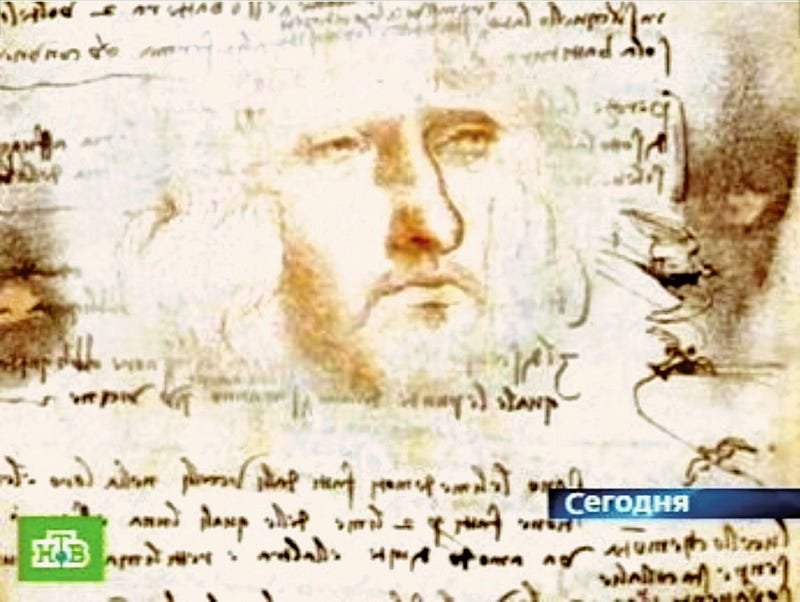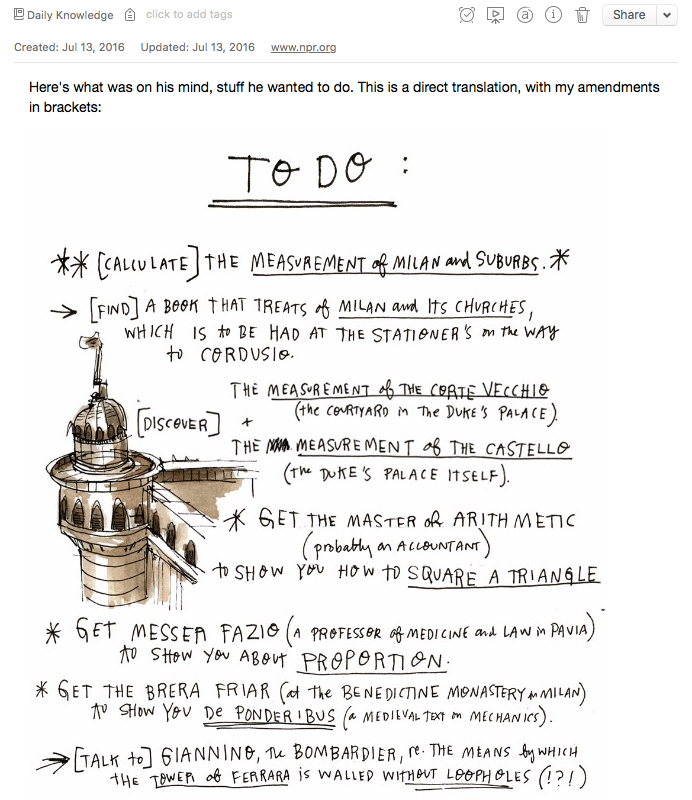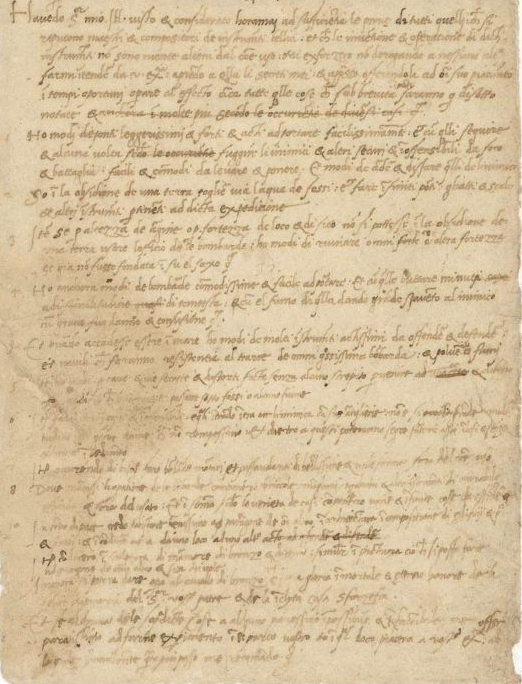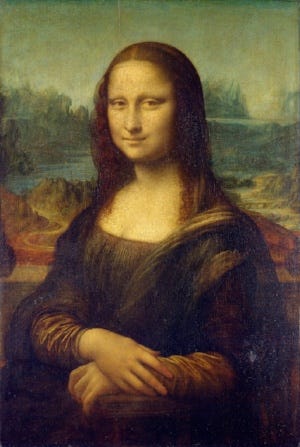Every great mind has been met with a great number of doubters. People are often inherently skeptical of someone that doesn’t think like they do or see the world from their perspective.
Worse, when one perspective has been adopted by many different people, and the same path followed by all those that come after, we run the risk of following the herd, barely casting a glance towards other new and potentially greater alternatives.
Holistic learning is a vague term with different definitions, but the core principle lies in the immersed exploration of a topic in your own way. What it’s not is learning through simple repetition or memorization, it’s not about taking someone’s word for it or only judging one point of view, and it’s not about following in another’s footsteps.
It’s about diving in head first, taking a DIY approach, looking at things from different angles — things that the world’s greatest minds do naturally. It’s from this method that we gain higher order knowledge and understanding.
Holistic Learning
1. Get Material & Build Your Web
Knowledge of an exorbitant number of facts without the underlying concepts is akin to having the material to build a house without yet having built anything of note. It’s only once you build the house that you have really achieved something.
Learning the facts is essential, you need the material, but once you have enough you need to start putting it together. Building through connections is about finding out what links to what and how, and forming a web as opposed to a list.
2. Compare Perspectives & Test Yourself
Knowledge is not flat, you can’t see everything by looking at it front on. Reading from one book or listening to one teacher is a great start, but it lacks the diversity that true understanding requires.
Look from different perspectives and find other opinions, ideas, and concepts. It doesn’t matter if they turn out to be dead ends or are just flat out wrong, at least then you’ll know, and that knowledge contributes to the overall effect.
Testing is a great way to see what you know, and what you don’t. It is in one way a measuring stick of your current understanding, and in another way it’s also a learning strategy in that the act of retrieval strengthens the memory.
3. Explore & Experiment
Following on with the metaphors, once you’ve built your house and looked at it from all angles, the next step is to start exploring it.
At this point we have a web of knowledge, with understanding of the related topics and the ideas that have been both successful and not so, now we need to start testing our own theories and exploring the dark corners of knowledge that have yet to be uncovered.
How can we do this effectively? Those people we call geniuses like Einstein, Tesla and Da Vinci excelled here, and one common tool they all seemed to employ was the metaphor.
Einstein used the metaphor of riding upon a light wave to help him visualize his theory in action, this resulted in e=mc2; he also came upon the idea of the “fabric” of space-time. Meanwhile, Darwin compared the power of small evolutionary changes to the effect of trickling water carving out entire canyons.
It’s incredible how much power the metaphor has. Using this power as a learning tool has clearly been around for some time, and it’s a key piece to the model of holistic learning. Humans have a natural tendency to spot patterns and find links, taking advantage of this tool means transferring the features of one thing onto another, it’s limited only by our imagination, which is perhaps why those geniuses were also very creative.
The Holistic Learning Mindset
One big facet of holistic learning is the DIY mentality, each of these points can and should be attempted using this mindset. From the moment your interest is sparked and the decision to learn more is made, you should be trying to learn by doing, to get yourself immersed in trial and error, and to use all your senses for a well-rounded experience.
Learning should be fun and playful. When you’re learning things you’re passionate about and which make you eager to know more, then you should have no trouble in reaching places others have yet to explore.
He used his imagination to explore reality in a creative way. What he learned through experimenting he expanded by applying his creativity to his findings. What he invented and discovered wasn't on books already that could be studied, or it would have been invented already by someone else before he came along. He lived in times when culture and art where highly valued and heavily funded by Royal patronage in all European courts.
While now funding is withdrawn from the arts and science, and only given to prove whichever theory profits the backer, back then it was given richly to all independent research by multi talented people of genius.
While now funding is withdrawn from the arts and science, and only given to prove whichever theory profits the backer, back then it was given richly to all independent research by multi talented people of genius.
5 Ways We Can Learn About Note-Taking from da Vinci
Anatomist, botanist, artist, engineer, geologist, inventor, musician, philosopher, polymath, sculptor, scientist, and writer. Without a doubt, Leonardo da Vinci (1452–1519) was one of the most brilliant people to ever walk the planet. Mankind has never seen such prolific individual success across such a vast array of fields. Especially revered for his artistic works the Mona Lisa and The Last Supper, he also imagined (through his expansive notebook collection) ideas for inventions that would become reality centuries after his death: The airplane, helicopter, calculator, machine gun, spring-powered car, and military tank.
Da Vinci’s diverse interests and knowledge crossed the worlds of art and science. With just the power of his imagination, he singlehandedly influenced the development of anatomy, geology, civil engineering, optics, and hydrodynamics.
One of the things that made da Vinci the ultimate Renaissance Man was his prescient observations and copious note-taking. Even today, we’re inspired by his unique approach to taking notes, an eclectic mixture of musings, sketches, hidden messages, and to-do lists that have shaped the way that we think about creativity, design, and observation.
Let’s dive into some of his notebooks and discover five ways we can be inspired by da Vinci’s accomplishments in our own work.
1. Invoke your own system
We know that da Vinci invoked unique systems of note-taking by writing backward. As a left-handed writer, he took notes from right to left in a technique known as “mirror writing,” which he may have done in an attempt to keep his notes illegible to anyone other than him.
In his book, Leonardo’s Brain: Understanding da Vinci’s Creative Genius, author Leonard Shlain notes that da Vinci’s style of writing is indicative that he accessed two different regions of his brain in his thinking: “Leonardo’s quirks of penmanship strongly suggest that….the traditional dominance pattern of one hemisphere lording it over the other does not seem to have been operational in Leonardo’s brain.” Most remarkably, da Vinci was able to accomplish so much with very little education or learning language from an early age. He didn’t learn Latin until his forties, and his long lists of vocabulary in his notebooks suggest that he taught himself.
Research suggests that da Vinci possessed incredibly rare cognitive attributes that allowed him to see, think, write, and visualize in ways that have never been seen before or since. Da Vinci constantly studied and observed, habits which were crucial to his note-taking technique. The things he saw helped strengthen his universal thinking — a blend of art and science — and he created a system to measure and track lifelong learning. His drawings helped establish a visual vocabulary that acted as cues to his writing. Together, they often lived in his journal side by side and were a rudimentary implementation of the Cornell Method, popular in academia today.
His system truly served his pursuit of knowledge and commitment to lifelong learning. Whether he was working hard to keep his ideas secret from interlopers (which has been debated), it’s clear that he was complacent about his work committed solely to paper. Despite the advances of movable type and the printing press, da Vinci was content not to turn his journals into published books.
How da Vinci can help you with today’s note-taking: Invent a system that works for you. Whether it’s borrowed from a legendary figure or cobbled together from books and professors, adopt a system and commit to it. For example, da Vinci’s system of observations and note-taking blended ideas, thoughts, and sketches (more than 13,000 filled his notebooks). He also was adept at blending learning from many different disciplines and used those skills interchangeably. A true generalist, he pioneered note-taking methods long before they became popular, including what would come to be known as the Cornell Method and mind mapping.
2. Always innovate
Long before they became common knowledge, da Vinci postulated ideas that were not only revolutionary but at the time, blasphemous:
- Earth is older than the Book of Genesis indicates.
- Humans share a common ancestor with monkeys.
- The Earth is part of an entire solar system.
- He predates Newton’s understanding of gravity and the fact that the planet was round.
Da Vinci’s ideas at the time were quite radical, but it’s even more of a feat when you realize that they predated the course of science and the existence of scientists altogether. In fact, da Vinci practically invented the modern course of science by applying his own research and insights and connecting them to his studies and observations — much of what was greatly articulated in his notebooks, known as codexes.
Follow da Vinci’s note-taking example: Adopt a note-taking style using either paper-based or digital means. Remember to stick to a regular schedule and review your notes often. Da Vinci’s notes were practical. It was not unusual to see reminders and memos alongside complex mathematical notes.
3. Take charge of your life through lists
From Edison to Michelangelo, checklists and to-dos are a common thread for how our most legendary note-takers tracked their work.
Lists are a great way to take stock of things we don’t want to forget and things we need to accomplish. For da Vinci, that meant tracking everything from vocabulary words to observations in anatomical research.
Da Vinci’s to-do list was nothing short of incredible. A team at NPR (National Public Radio) worked to decipher his impressive to-dos and a sampling reveals that da Vinci imagined tackling far more than a lifetime’s worth of work.
According to The Royal Collection Trust, where these manuscripts first publicly appeared, da Vinci employed some rather unusual items in his checklists:
“Leonardo lists spectacles, stockings, shoelaces, a pane of glass, a fine-tooth bone saw, forceps and a skull as just some of the items that he thought he might need for a journey,” Shlain writes. “He reminds himself to obtain a skull, to get his books on anatomy bound, to observe the holes in the substance of the brain, to describe the tongue of the woodpecker and the jaw of a crocodile, and to give the measurement of a dead man using his finger as a unit.”
Da Vinci was also a consummate cook. Many of his notebooks show cost, quality, and quantity of the food he encountered throughout his travels.He also used notes to plan and prepare feasts, shopping, and even used his notebook to plan kitchen remodels for the castle of Duke of Milan.
List it like Leonardo: Follow Da Vinci’s lead and take advantage of checklists and to-do lists. It’s tough to tackle everything on your list, but we can use exemplary models like da Vinci to help propel our work.
4. Cross-pollinate
Blending both the arts and sciences was extremely crucial to da Vinci’s work.
For him, everything was literally connected to something else. And contrary to popular belief, he was not a solitary figure, churning out ideas. He relied on the outside world and others to help empower and enrich his ideas.
In addition, his observations from other aspects of nature — animals and plants — helped shape his ability to study everything from fashion to psychology, and even fostered his understanding of mechanics.
Make connections the way Da Vinci did: Track your personal ideas and observations everywhere you go. It’s tough to steal away moments amidst today’s digital chaos, but when the moment strikes you, sketch out an idea on paper or a Moleskine when you’re out and about. It’s amazing how a few moments away can connect your ideas and thoughts to help solve your most frustrating challenges.
5. Promote Yourself
It’s hard to self-promote and market ourselves when we’re looking for a job, but da Vinci had it down — because he had kept such detailed notebooks of his work. When he was trying to land a job working for a leader in Milan as a military engineer, da Vinci spelled out his accomplishments with a list of ten ways he could help. He covered everything from advanced knowledge of military engineering to the ability to draft plans for indestructible bridges that could be moved easily in the heat of battle.
Take inspiration from Da Vinci when selling yourself: Just like the biggest companies in Silicon Valley, you can constantly innovate in your profession and your life to make and change for the better. All it takes is your imagination.
A page from da Vinci’s notebook
How do you think you can use da Vinci’s note-taking techniques? Share your story and tips in the comments.
https://medium.com/taking-note/5-ways-we-can-learn-about-note-taking-from-da-vinci-a47a0fca361e
It’s hard to talk about accelerated learning without mentioning the impressive genius of Leonardo da Vinci. He was a master artist, anatomist, engineer, scientist, biologist, and experimenter. What makes his successes that much more amazing is that he never received formal education beyond basic reading, writing, and arithmetic.
So how did he manage to learn so much? Self-education.
Leonardo was a genius because he not only questioned everything around him, but he actually, physically sought the answers to his questions. He wasn’t content with just reading about a study; he wanted to perform the experiment himself. Leonardo was the ultimate doer and learner. From flying machines, to paintings, to dissection, Leonardo’s creativity and imagination knew no bounds.
Here are 5 quick lessons we can learn from Leonardo da Vinci:
So how did he manage to learn so much? Self-education.
Leonardo was a genius because he not only questioned everything around him, but he actually, physically sought the answers to his questions. He wasn’t content with just reading about a study; he wanted to perform the experiment himself. Leonardo was the ultimate doer and learner. From flying machines, to paintings, to dissection, Leonardo’s creativity and imagination knew no bounds.
Here are 5 quick lessons we can learn from Leonardo da Vinci:
- Don’t limit yourself to one field of study.
- Embrace curiosity and train your mind to question everything.
- Don’t just sit on these questions; seek answers.
- Learning happens over time. Leonardo didn’t wake up one morning knowing the entire anatomy of the human body. It took years of experimentation and questioning.
- Record, record, and record some more. Recording your thoughts and experiences gets those creative juices pumping and helps you better recall information. All thoughts and ideas are valuable enough to record even if they aren’t valuable enough to actually pursue.
This list barely brushes the surface of all that Leonardo has to offer. Here are some resources so that you can learn more about his personal life and techniques for mastery.
News that matters
➜ A recent study performed by the University of Pennsylvania School of Medicine has found that art classes help medical students improve their observational recognition skills in the clinic. Studying a variety of subjects doesn’t hinder your ability to succeed in one field, but can actually improve your performance across disciplines.
What we're reading
From the book: “The world at large today reverences him as a painter, but to Leonardo painting was but a section of the full circle of life."
Leonardo kept a record of most everything he encountered or pondered. Interestingly, he also documented all of his wrongdoings. He would list on the left what he had done wrong and on the right, how he had eventually made up for it. For example, he owed work to his brother and instead of fulfilling the job, Leonardo ran away. He recorded this on the left and later in life, wrote on the right that he had made up for it after his brother died by taking care of his brother’s children.
“I love those who can smile in trouble, who can gather strength from distress, and grow brave by reflection. 'Tis the business of little minds to shrink, but they whose heart is firm, and whose conscience approves their conduct, will pursue their principles unto death.” -Leonardo da Vinci
What we're listening to
Two master learners talking about other master learners. Prepare to feel like a slacker… ;) In this episode Tim interviews Walter Isaacson, president and CEO of The Aspen Institute and author of many biographies - his most recent being about Leonardo da Vinci. Walter shares little-known information about Leonardo’s personal life and explains his secrets to mastery. They also discuss some of history’s other famous innovators and the tools they used to learn so much so quickly.
The main takeaway from the episode: Don’t limit yourself through specialization. Embrace curiosity, seek the answers to many questions, and learn from everything that the world has to offer. Creativity happens at the intersection between different disciplines.
What we're watching
https://medium.com/the-mission/learn-like-leonardo-da-vinci-243f456acc25






No hay comentarios:
Publicar un comentario